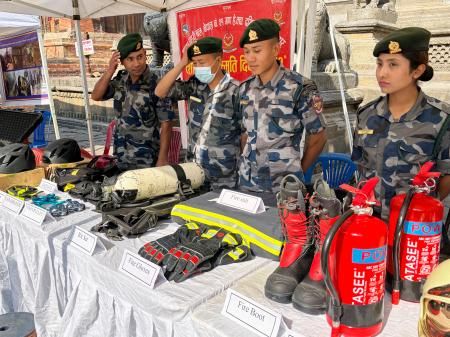Nepal: Reflecting on Earthquake Recovery – A Decade of Resilience and Reconstruction
Ten years after the devastating 2015 Nepal earthquakes, the nation continues its journey of recovery and reconstruction. The 7.8 magnitude earthquake and subsequent aftershocks left a trail of destruction, claiming thousands of lives and leaving countless others displaced. While significant progress has been made, challenges remain, highlighting the complexities of disaster recovery in a developing nation. This article delves into Nepal's progress, persistent hurdles, and the lessons learned in the decade since the tragedy.
The Scars Remain: Assessing the Damage
The 2015 earthquakes inflicted widespread damage, impacting infrastructure, livelihoods, and the cultural heritage of Nepal. The immediate aftermath saw a massive humanitarian response, with international aid pouring into the country. However, the scale of the disaster proved immense.
- Infrastructure Devastation: Thousands of homes, schools, and hospitals were reduced to rubble, particularly in the hardest-hit districts of Kathmandu Valley, Gorkha, and Nuwakot. Critical infrastructure like roads and bridges also suffered significant damage, hindering rescue and relief efforts.
- Loss of Life and Displacement: The earthquake claimed over 9,000 lives and injured thousands more. Hundreds of thousands were left homeless, living in temporary shelters for extended periods. The psychological trauma experienced by survivors continues to be a significant concern.
- Cultural Heritage Losses: Many ancient temples, stupas, and other significant cultural sites were severely damaged or destroyed, representing an irreplaceable loss to Nepal's rich heritage. The reconstruction of these sites has been a painstaking and complex process.
The Road to Recovery: Progress and Setbacks
Nepal's recovery has been a marathon, not a sprint. While significant strides have been made, the process has been fraught with challenges:
- Reconstruction Efforts: The government, alongside international organizations and NGOs, launched ambitious reconstruction programs focusing on housing, schools, and hospitals. While considerable progress has been achieved in rebuilding homes, challenges persist in ensuring the quality and resilience of new constructions. [Link to a relevant government report on reconstruction progress]
- Funding and Transparency: Securing and effectively utilizing the substantial international aid pledged has been a persistent challenge. Ensuring transparency and accountability in the disbursement of funds has been crucial to maintaining public trust. [Link to an article discussing aid transparency in Nepal]
- Community Engagement: Successful reconstruction requires active community participation. Involving local communities in the planning and implementation of projects is vital for ensuring that the needs and priorities of affected populations are addressed. [Link to a case study on successful community engagement in reconstruction]
- Disaster Preparedness: The earthquakes underscored the need for improved disaster preparedness and risk reduction measures. Investing in early warning systems, building codes, and community-based disaster preparedness programs is crucial for mitigating the impact of future disasters.
Looking Ahead: Lessons Learned and Future Resilience
The Nepal earthquake recovery offers valuable lessons for disaster management globally. The experience highlights the importance of:
- Rapid needs assessment: Accurate and timely assessment of needs is crucial for effective resource allocation.
- Coordination and collaboration: Effective coordination between government agencies, international organizations, and local communities is essential for a coordinated response.
- Building back better: Reconstruction efforts should prioritize resilience and incorporate disaster risk reduction measures.
- Long-term recovery planning: Recovery is not a short-term process. Long-term planning is essential for addressing the lasting impacts of a disaster.
Nepal's journey of recovery continues. While significant progress has been made, challenges remain. By learning from past experiences and implementing robust disaster preparedness and risk reduction strategies, Nepal can build a more resilient future and safeguard against the devastating impacts of future earthquakes. The resilience shown by the Nepali people is a testament to their spirit, and continued international support is vital in ensuring a complete and sustainable recovery.
Call to Action: Learn more about how you can support Nepal's ongoing recovery efforts by visiting [link to a reputable charity supporting Nepal].
